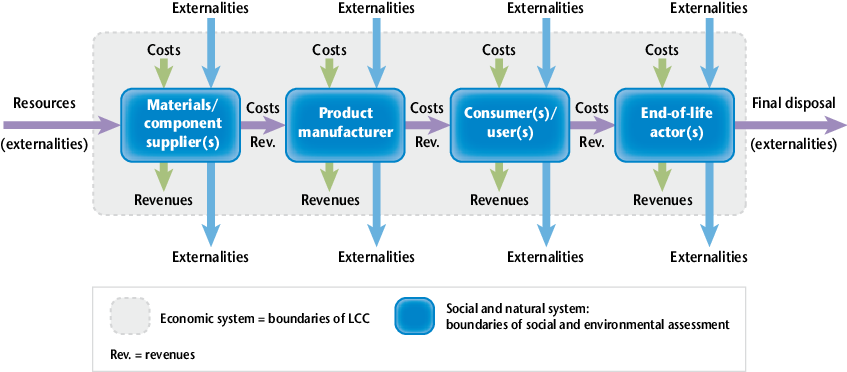Mastering Life-Cycle Cost Analysis in Civil Engineering
When you’re wearing your civil engineering hat, you’re not just crafting infrastructure solutions that tick the boxes for technical and functional needs. You’re also tasked with making sure that these solutions are cost-effective and efficient throughout their entire lifespan. This is where Life-cycle Cost (LCC) analysis comes into play, as it helps you gauge the total ownership costs associated with your design alternatives. These costs extend beyond the initial investment and take into consideration operations, maintenance, replacement, and disposal expenses. This article delves into the tools and techniques at your disposal to carry out LCC analysis, enabling you to optimize your design solutions for long-term sustainability and value.

The LCC Framework:
LCC analysis hinges on a well-defined framework that outlines the parameters and scope of the cost assessment. This framework should detail the objective and perspective of the analysis, whether it’s for a single project or a portfolio of projects. Additionally, it should consider the phases and activities that are relevant to the life cycle, including planning, design, construction, operation, maintenance, rehabilitation, replacement, and decommissioning. Moreover, it should specify the time horizon and discount rate used to compare the present value of future costs across different alternatives. Cost categories and elements should also be delineated, such as capital, operational, maintenance, energy, environmental, social costs, and residual value. Lastly, it’s crucial to identify the data sources and methods used to estimate the costs of each element, which might include historical data, expert opinions, market prices, or models.
LCC Tools:
LCC tools are software applications that can lend a helping hand in conducting LCC analysis. They provide data, models, and calculations for various cost elements and scenarios. For instance, the US Department of Energy’s Building Life Cycle Cost (BLCC) tool can help assess the energy and economic performance of building designs and systems. The US Federal Highway Administration’s Pavement Life-Cycle Cost Analysis (LCCA) tool is your go-to for comparing the life-cycle costs of different pavement design options. Similarly, the Bridge Life-Cycle Cost Analysis (BLCCA) tool allows you to make comparisons for various bridge design alternatives. And not to be forgotten, the European Commission’s Infrastructure for Spatial Information in Europe (INSPIRE) tool can evaluate the life-cycle costs and benefits of spatial data infrastructures.
LCC Methods:
LCC methods provide techniques to weigh and optimize the life-cycle costs of different design alternatives. For example, Net Present Value (NPV) calculates the disparity between the present value of benefits and costs for each alternative, with the highest NPV option emerging as the preferred choice. Then there’s the Benefit-Cost Ratio (BCR), which gauges the ratio of benefits to costs, leading to the selection of the alternative with the highest BCR. The Internal Rate of Return (IRR) computes the discount rate that sets the NPV of each alternative to zero, allowing the one with the highest IRR to take the lead. Sensitivity Analysis tests how the results of the LCC analysis fluctuate when assumptions or parameters change, pinpointing the most influential factors. Finally, Monte Carlo Simulation generates random values for uncertain variables in LCC analysis and estimates the probability distribution of outcomes for each alternative.
LCC Challenges:
LCC analysis can pose its fair share of challenges, and it’s essential to acknowledge the limitations and uncertainties that might affect the precision and reliability of your results. Data availability and quality can be thorny issues, as you may lack sufficient or dependable data to estimate the costs of all elements and phases of the life cycle. Furthermore, cost variability and escalation, risk, and uncertainty, as well as stakeholder involvement and communication, can all throw a spanner in the works. Cost variability and escalation are hard to predict, thanks to factors like inflation, market swings, or external influences. Risk and uncertainty are also elusive to account for due to changes in demand, regulations, technology, or environmental conditions. Finally, stakeholder involvement and communication are indispensable, as different stakeholders often have distinct interests, expectations, and preferences regarding design solutions and their life-cycle costs.
LCC Benefits:
In spite of the hurdles, LCC analysis offers a trove of advantages to enhance your design solutions and realize your project objectives. It’s a pathway to cost savings by pinpointing and selecting design alternatives with the lowest life-cycle costs or those that deliver the most value for the money invested. It also sets the stage for performance improvement by scrutinizing and optimizing design alternatives with superior technical and functional performance, ensuring they meet or surpass quality standards and specifications. What’s more, it aids in boosting sustainability by assessing and minimizing the environmental and social impacts of your design solutions, thus contributing to the social and economic development of communities. Lastly, it serves as a decision support system by offering clear and transparent information to substantiate design decisions and communicate your choices effectively to stakeholders.
Conclusion
As a civil engineer, integrating Life-cycle Cost (LCC) analysis into your design process is not just a strategic choice; it’s a necessity. By leveraging the right tools and methods, you can make informed decisions that not only meet technical and functional requirements but also ensure long-term cost-effectiveness and efficiency. While LCC analysis may present challenges, the benefits far outweigh the difficulties. It empowers you to save costs, enhance performance, promote sustainability, and foster transparent decision-making. Ultimately, this holistic approach to infrastructure projects helps you create enduring solutions that are economically, environmentally, and socially responsible, driving progress and prosperity for communities and stakeholders alike.

